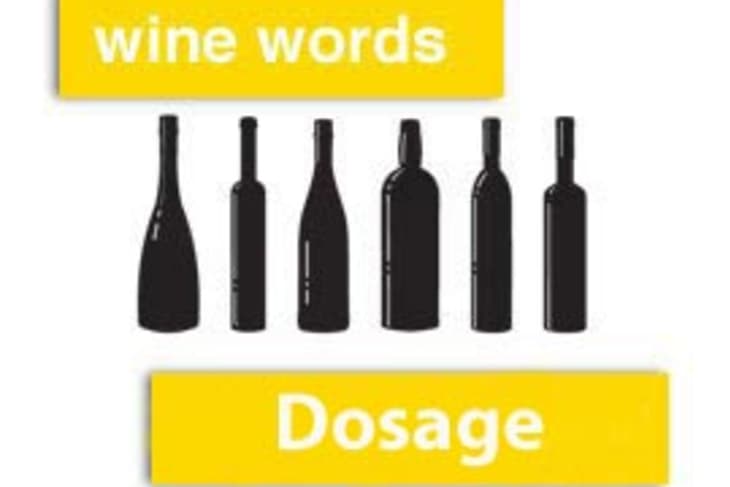Wine Words: Dosage
Dosage is a wine word specific to the production of Champagne and sparkling wine. It refers to the amount of sugar added to the sparkling wine just before corking, or to the sweetness level of the finished wine.
The dosage, or liqueur d’expedition (as it is called in French), is typically a mixture of sugar and wine, though it could just be a sweet wine. The tradition of adding dosage comes from Champagne. Champagne has a cool climate, where grapes struggle to ripen and the base wines for making Champagne are noted for their very high acidity. This acidity becomes even more marked after the second fermentation which creates the bubbles. The addition of a ‘dosage’ mixture was traditionally deemed necessary to balance the acidity in the wines and render them drinkable.
There are different levels of dosage. These are officially regulated for all Champagne and sparkling wines and they determine the final style of the wine The most usual level is Brut. A Brut style Champagne or sparkling wine can have between 6g and 15g/l residual sugar in the final wine.
The following table shows the different levels from driest to sweetest.
- Extra Brut: Less than 6g residual sugar / litre. These wines are often called Brut Zero or zero dosage, if no dosage has been added
- Brut: 6-15g residual sugar / litre. As indicated this is the most common sweetness category. Brut wines are fairly dry to taste.
- Extra Sec: 12-20g residual sugar / litre. A fairly off-dry style. The discontinued Moet White Star was a particular popular Extra Dry style popular in the United States
- Sec: 17-35g residual sugar / litre. A small category of medium-sweet wines, even though the word ‘sec’ is French for dry!
- Demi-Sec: 35-50g residual sugar / litre. Quite a sweet style and also a small category
- Doux: 50+g residual sugar / litre. Very sweet style
While the Brut style allows for up to 15g/l the typical level added today is about 10-11g/l. Over the past few years the trend has been toward lower dosage with quite a number of Brut Champagnes at 9g/l. There is also a growing, but niche, demand for low or non-dosage styles such as Extra Brut or even Brut Zero. These wines, which are bone dry, can taste a little austere to many palates.
Mary Gorman-McAdams, MW (Master of Wine), is a New York based wine educator, freelance writer and consultant.
Previous Wine Words
• Wine Words: Clarity
•
Wine Words: Color
• Wine Words: Complexity
•
•
Wine Words: Aromas
•
Wine Words: Alcohol
•
•
•
•
•
•
• Wine Words: Style
• Wine Words: Oak
• Wine Words: Clarity
• Wine Words: Extraction
•
•
• Wine Words: Reserva, Riserva, Reserve
• Wine Words: Quality
•
Wine Words: Vintage
•
•
• Wine Words:
•
• Wine Words: Champagne
(Image: Underlying image by Sadovnikova Olga/Shutterstock)
